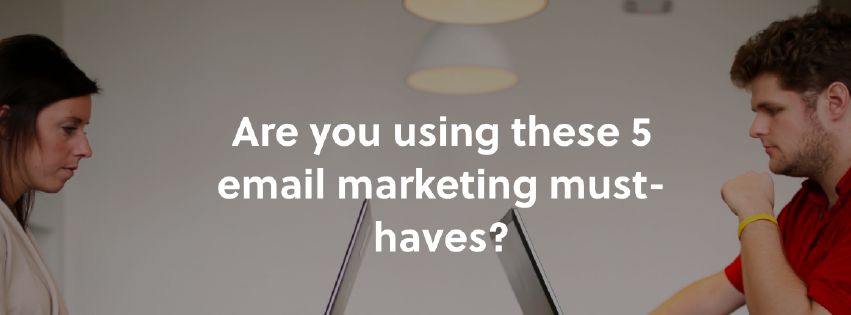Originally posted on Achieve.
If you’ve ever been in the position of researching and purchasing a new email platform, you understand how overwhelming the process can be. Or maybe you are not 100% happy with your current platform, but you are not sure where to start looking for a new one. (When I say “email platform,” I mean the software that you use to send emails to your database of clients, donors, volunteers and others, such as Constant Contact, MailChimp, Emma, etc.) Finding the right software doesn’t have to be as terrible or daunting as you think, and luckily there are a few easy rules that you can follow to make sure you are adopting one that meets your organization’s needs and also has the functionality that will help you grow your marketing reach. There is no magic software that is right for everyone, but by knowing the right questions to ask will get you ahead of the game. Here are a few things that you should look for in ANY email platform:
#1: A Great Experience
Take an hour to play with three different demos. If it isn’t easy to use, then you won’t use it.
If the software that you are looking at is not intuitive or doesn’t make sense to you when you use it, then move along to the next one. You should be able to easily navigate how to create and build an email. Depending on your technical skill level, you may need to watch one or two tutorials, but once you get the hang of it, you should be able to have a fairly stress-free process when building and sending emails. Most email platforms allow you to use a free trial, so take advantage of this! Block out an hour of your day, try out two or three different platforms and see which one feels the most natural to you. In addition to being easy to use, having a platform that provides great customer service will save you from a million headaches in the future. When something does go wrong, you want to know that you will be taken care of.
#2: Mobile-Friendly Template
If it’s not mobile-friendly, you shouldn’t even send it.
60% number of emails are opened on a device other than a desktop computer, so you better be sure you are creating mobile-friendly emails. Most good platforms reformat the email to fit for mobile. If yours does not, get rid of it. Mobile usage will only continue to rise, so you mind as well start catering to the market now. Some platforms even allow you to see what the mobile version looks like before you send your email. Don’t set yourself up to look like an outdated organization! Go mobile.
#3: Automatic Thank You Email
Make your audience feel loved — say THANK YOU often and give them content that helps them succeed.
I cannot stress this enough. If there is anything that your constituents hate, it is not feeling appreciated, and one of the best ways to build loyalty among your audience is by saying thank you. When someone signs up for updates or a newsletter, be sure that they get an automatic thank you email. Also, think about what you want your thank you email to look like – you don’t want a generic one-sentence plan format text. Make it look like the appreciation that you want your audience to feel. You may even want to set up an automatic welcome series for new subscribers. The type of content that is good to include in a welcome series are resources that they would find useful. So if your subscriber is someone from an arts education organization, one of your welcome series emails might be “5 Tricks to Creating a Curriculum that Clicks” or “10 Examples of Our Favorite Art Assignments.” Don’t use a welcome series to talk about yourself, make it about your audience and what they want to hear. It’s your chance to show your value and expertise.
#4: Reports
Take one hour every month to look at your email data and reevaluate your strategy.
Email platforms are next to useless if they do not have the kind of reporting that you want. At the bare minimum, you should be able to track open rates, click-through rates and opt-outs. This way you will be able to test subject lines and see which ones get more opens. You can also test your call-to-action in the email and see what type of call gets the most clicks. Set aside an hour every month to look at your email stats and think about what is working and what is not working. Ask yourself about subject lines, content, calls-to-action, advertisements, why people are opting out, why your list is shrinking or growing, etc.
#5: Social Sharing
People trust their friends more than they trust you.
One of the best ways to get your content circulated more broadly is by letting your constituents share it with their friends. People trust articles and recommendations from their friends and followers on social media more than they trust your organization. Be sure you have buttons on your emails that allow your audience to tell the world how amazing you are. There are a lot of other things to think about when considering an email platform, such as subscriber (list) segmentation, cost, marketing automatic tools, integrations with other platforms and more, but rest assured that if you get the basics down, you are on the right track.

